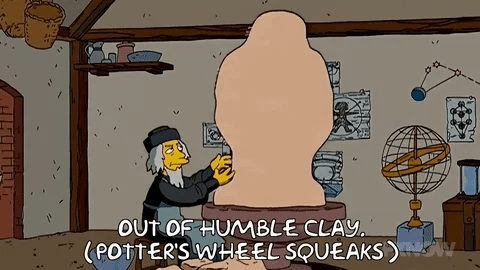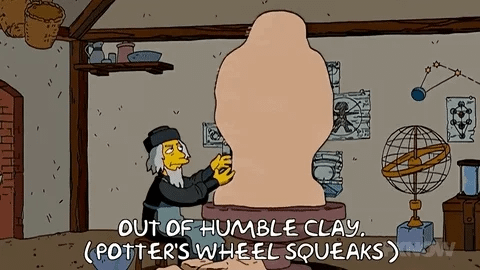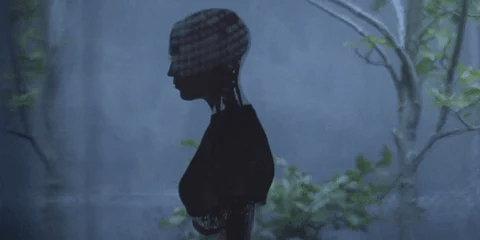Not a day goes by without a new post, email, or news article about how AI is stealing our jobs.
This is a fear for many people in all sorts of industries, but I can only write from my own perspective as the co-owner of a copywriting, content strategy, and web design company.
We work with clients to determine how online content can help them achieve their goals (lead generation, improve Google rankings, launch a new product, etc.) and then deliver the content; this could be anything from web copy to case studies and long-form guides to FAQs and downloadable whitepapers.
Why am I telling you about what I do for work?
Well, there is a distinct sense of trepidation in the air in our industry at the moment— and rightly so. Businesses are increasingly relying on AI writing tools to create their content and, as a result, we (the content writers) are actively competing with these tools for work.
I better start by saying that I know AI writing isn’t as good as what a human can produce. But that doesn’t seem to be stopping people from using it, and we can only assume it will get better— and this is happening very, very quickly.
Also, I feel like I need to mention that tools like ChatGPT are absolutely terrible for the environment, alongside the moral issue of how they source and process what they spit out. AI tools do not create original content— they process and refine other content to produce something that appears new, but is, in fact, an amalgamation of what already exists online.
With all that being said, we cannot disregard the reality of being a content professional during the rise of AI. At the risk of sounding harsh, there are some unignorable facts:
Clients are, in some instances, choosing AI over human copywriters
AI is getting better and will continue to do so
As a result, it’s safe to say that certain parts of our roles will, inevitably, become redundant. And human beings will suffer. Jobs will be lost.
A tangent
I’ve recently gotten really into these videos by former Rubber Bandit Bobby Fingers, who makes incredibly intricate and insanely bizarre dioramas of obscure celebrity moments. As a qualified special FX artist, Bobby creates his figures using all sorts of media— everything from the most visceral analog of clay sculpting through to CAD design and 3D printing.
On my journey through the wild world of Bobby Fingers, I was starting to think about how 3D printing, as a technology, has impacted the world of model makers, special FX artists and other hands-on creators. Technically, Bobby could probably create his dioramas in a CAD system and 3D print them in their entirety with zero sculpting. He could even programme a computer to airbrush and colour the models.
But how would this differ from his current process?
What’s particularly interesting to me— and most relevant to the discussion of AI for writers— is that Bobby does use 3D printing as part of his process. He, like probably most other people in his field, has not turned their back on the technology out of fear. He’s embraced it.
I suspect the advent of 3D printing did bring with it a wave of fear to his industry, and it meant that many processes that required human intervention could now be automated, cutting the need for manual labour. But even with this huge shift in technology and processes, people are still making models, props and tools— they are just embracing the likes of 3D printing to streamline some of the processes.
How is this relevant to us as writers?
There are a few lessons to be learned here:
1. Working out how new technology can improve our work and save us time
Special FX artists aren’t the only ones who are embracing new technology to boost efficiency and streamline tedious tasks. I’ve spoken to web developers and software engineers who swear by the likes of ChatGPT and other AI tools to help identify problems in code, or even to write code.
Due to their very nature, these people are typically more pragmatic and open to new tech than us writers, and they have faced many technological advancements in their careers, AI is just another factor to consider.
What they have done is used tools to improve their working lives and embrace the aspects of their job that a piece of software can never replace— the strategy, the problem-solving, and the creativity.
This has been a long way around of getting to the final point…
2. Finding the special spark that only humanity can bring to a project
Instead of fighting against the inevitable, we, as writers (or those in another field threatened by AI) need to do some serious soul-searching to determine what exactly it is that makes us human.
Look at other art forms.
What makes a novel written by a human being so special?
It’s the author's unique voice, the rich textures of the words, and, perhaps most importantly, the impetus to write it in the first place.
The same goes for music. I’ve been listening to a lot of Fontaines, D.C., recently. AI could never create a voice like Grian Chatten’s. It could only copy it.
Nor could it ever come up with the weird and wonderful ideas that make Bobby Finger’s videos so great.
AI is nothing without a prompt.
So, instead of panicking about stealing your job, it’s time to roll up your sleeves and carve out a place in your industry where only you can succeed. Bring the humanity back to what you do.
No one else is you. Not even AI.
It’s unbelievably cold here in the North East. I’ve managed to brave the icy temps for a co-working day at a new space I’ve joined in town. It’s nice to get out and about; I’m even writing this from there! That’s why there’s no audio version this week. I will add it at a later date. No one wants to hear me read this out loud in a shared working space.
I also enjoyed:
🎥 Nosferatu (2024) - We went to see the new Eggers epic at the cinema and it was great. Amazing performances, beautifully shot, and Skarsgård never disappoints in his weird character roles.
See you next week,
Ellen x
If you like the audio version of this newsletter, you can listen to them all over on Spotify. Here’s the last issue:
💌 About this email
I’m Ellen, and I write about mental health for the chronically online. I am a freelance copywriter, strategist and web designer, and I work from home with my husband, Craig, at Content By The Sea. We have two rescue greyhounds, Potter and Harmony, and a toddler.
I started this newsletter in March 2020 and have sent over 200(!) emails; currently, I have over 1,200 subscribers. I write about a wide variety of topics, including diet culture, my love of running, jealousy, my life falling apart, mam guilt, and this dystopian world we all live in.
💛 How you can support me
If you like reading my weekly emails, you can give me a kickback in one or more of the following ways:
📨 Share this post
📬 Subscribe for free (if you haven’t already!)
💬 Leave a comment on this newsletter
💰Sign up to be a paid supporter of the newsletter for just £4 a month or £40 a year.
The current perks of being a paid subscriber are receiving one extra Touching Grass email each month with all of my top films, shows, podcasts and books. Most importantly, you are supporting me in continuing to write this newsletter.









Interesting insights, and I feel the human copywriters pain! I've yet to work with a company who has laid off writers (not including freelance copywriters for the likes of Forbes who were abusing algorithms for traffic), but I have seen businesses using AI to scale production. Previously the only way would be hire another human.